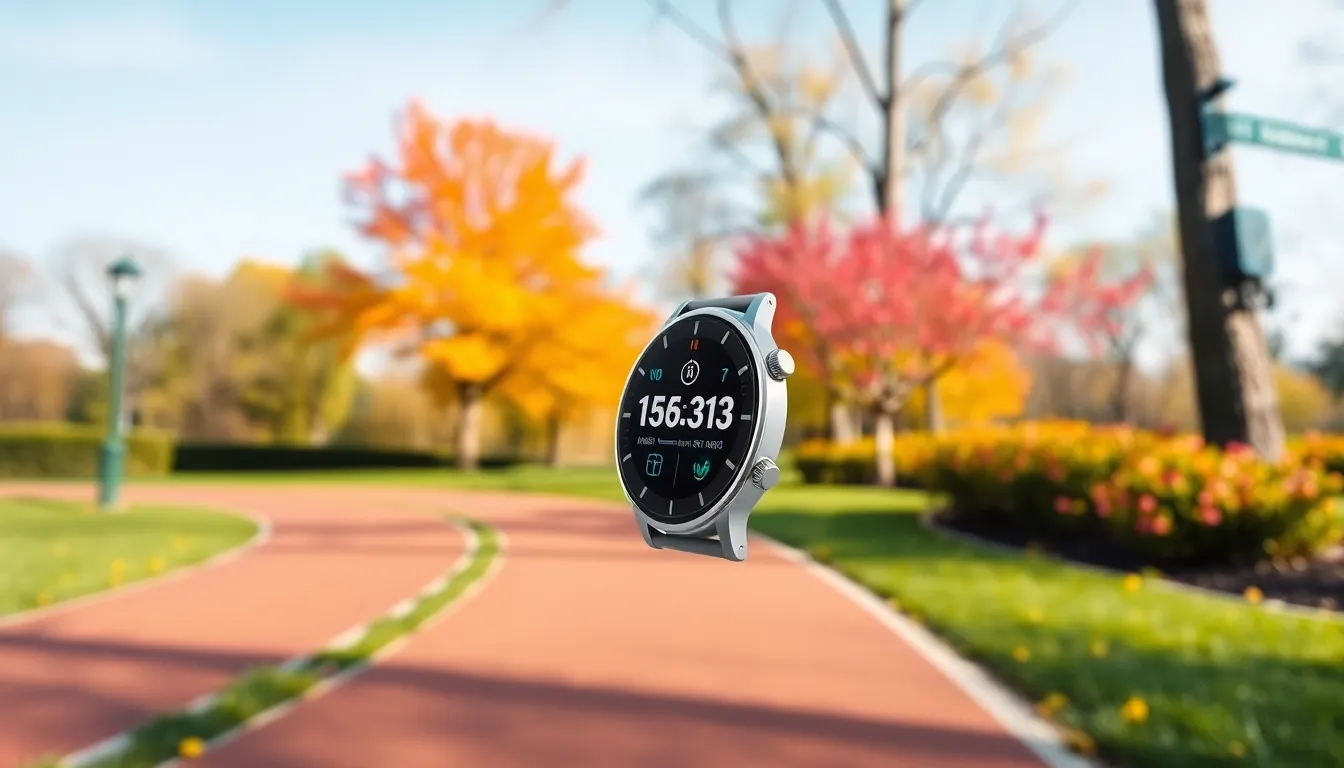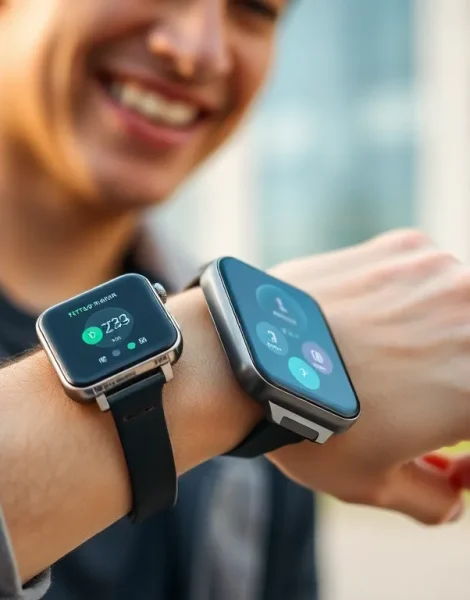In a world where smartwatches and fitness trackers are practically fashion accessories, ARM processors are the unsung heroes powering these gadgets. These tiny chips pack a punch, delivering impressive performance while sipping energy like it’s a light summer cocktail. Who knew that such small components could make such a big impact on how we track our steps and monitor our heart rates?
As wearables become more sophisticated, the demand for efficient processing power skyrockets. ARM processors step up to the plate, offering the perfect blend of speed and battery life. They’re like the overachievers in the tech classroom, making sure your device runs smoothly without constantly begging for a recharge. So, let’s dive into the fascinating world of ARM processors and explore how they’re revolutionizing the wearables market, one pulse at a time.
Table of Contents
ToggleOverview of ARM Processors in Wearables
ARM processors serve as the backbone for many wearables, enabling smoother performance while maintaining energy efficiency. These chips maximize battery life, making them well-suited for compact devices like smartwatches and fitness trackers. Capable of performing numerous tasks, ARM processors handle everything from activity tracking to notifications seamlessly.
Speed plays a vital role in user experience. Users expect quick responses and instant access to features, which ARM processors deliver effectively. In addition, they support various operating systems, allowing manufacturers to customize applications according to user preferences.
Energy management becomes essential as the wearable market expands. ARM’s architecture includes features that optimize power consumption, ensuring devices operate longer on a single charge. This efficiency addresses the common concern of battery life in wearable technology.
Data security is another significant aspect. These processors come with built-in security features, safeguarding user information and maintaining privacy. As wearables often transmit sensitive data, this capability enhances user trust and product reliability.
With ongoing advancements in technology, ARM processors are adapting to meet new challenges. Developments focus on increasing processing power while further reducing energy consumption. Manufacturers recognize that the demand for sophisticated applications in wearables continues to grow, and ARM leads the way in innovation.
The integration of ARM processors in wearables not only enhances performance and efficiency but also addresses critical factors like speed, energy management, and security. This combination positions ARM as a key player in the rapidly evolving wearable technology landscape.
Advantages of ARM Processors

ARM processors provide numerous benefits that enhance the functionality of wearable devices. These benefits primarily include power efficiency and robust performance capabilities.
Power Efficiency
Power efficiency stands out as a critical advantage of ARM processors in wearables. Offering low energy consumption, these processors allow devices to operate longer on a single charge. Energy-efficient designs minimize heat generation, contributing to cooler performance and longer battery life. These features significantly benefit users, who prefer devices that last throughout the day without frequent recharging. Additionally, ARM’s architecture enables dynamic power management, adjusting performance based on usage patterns. This flexibility optimizes energy use, ensuring that wearables remain functional during extended wear.
Performance Capabilities
Performance capabilities of ARM processors significantly enhance the user experience in wearables. These processors offer high-speed processing for tasks such as real-time activity tracking, notifications, and data synchronization. With multiple cores, ARM processors can perform several functions simultaneously without compromising responsiveness. Enhanced graphics support elevates the visual experience, making interfaces smoother and more engaging. Furthermore, compatibility with various operating systems allows manufacturers to create customized applications tailored to user needs, enriching overall device functionality. Users benefit greatly from the seamless integration of these powerful processors, which support complex applications in compact formats.
Key Applications of ARM Processors in Wearables
ARM processors thrive in wearable technology, serving diverse applications that enhance user experience and functionality.
Fitness Trackers
Fitness trackers utilize ARM processors to deliver precise activity monitoring and seamless performance. These chips process real-time data, including steps taken and calories burned, while maintaining energy efficiency. Users benefit from extended battery life as processors manage power consumption dynamically, adapting to various tasks. Optimized for lightweight designs, ARM processors ensure these devices are compact, stylish and user-friendly. Thus, fitness enthusiasts enjoy accurate insights without sacrificing style or comfort.
Smartwatches
Smartwatches leverage ARM processors for versatile scheduling and notification management. These processors enable quick app responsiveness, providing users instant access to messages and alerts. With support for multiple operating systems, users can customize functionality to suit their needs. ARM processors excel in graphics support, allowing for vibrant displays that enhance user interaction. Consequently, smartwatches not only function effectively but also engage users with appealing interfaces.
Health Monitoring Devices
Health monitoring devices benefit significantly from ARM processors’ robust capabilities. These devices collect vital health data, including heart rate and sleep patterns, requiring efficient processing for accurate tracking. ARM’s architecture optimizes power usage, ensuring continuous monitoring without frequent recharging. Security features also play a vital role, protecting sensitive health information that users trust these devices to manage. As a result, health monitoring devices enhance peace of mind while delivering essential insights into personal health.
Future Trends in ARM Processors for Wearables
Continued innovation in ARM processors indicates a significant shift toward specialized designs tailored for wearables. Manufacturers are focusing on increasing processing power to support advanced applications like augmented reality and health diagnostics. Furthermore, energy efficiency remains a priority, pushing developers to refine power management techniques that extend battery life even further.
Incorporating machine learning capabilities represents another trend in ARM architecture. These features enable devices to learn user preferences, optimizing performance for personalized experiences. Enhanced graphics support is also becoming commonplace in newer models, ensuring smoother interfaces and improved interaction.
Security advancements are essential as wearable devices collect sensitive data. ARM is prioritizing built-in security features that safeguard user information against potential threats. Additionally, interoperability with various platforms remains critical, allowing for a broader range of applications and services.
Recent developments show ARM processors are increasingly integrating connectivity options. This evolution facilitates seamless communication between devices, enhancing the overall user experience. As wearables integrate more functionality, the need for reliable connectivity continues to grow.
Wearable technology is likely to witness the adoption of flexible and rugged designs, promoting further integration of ARM processors. These innovations support diverse use cases, including industrial applications, environmental monitoring, and specialized medical devices. Focusing on compact designs enables ARM processors to fit into smaller form factors without compromising performance or battery life.
Projections indicate that advancements in ARM processors will align closely with the growth of Internet of Things (IoT). The synergy between wearables and IoT signifies a transformative era for smart devices, reshaping everyday experiences. By prioritizing performance, efficiency, and security, ARM processors are set to play a pivotal role in the future of wearables, crafting smarter, more versatile devices for users.
ARM processors are at the forefront of wearable technology, driving innovation and enhancing user experiences. Their blend of performance and energy efficiency makes them indispensable for devices like smartwatches and fitness trackers. As the demand for advanced features grows, ARM’s ability to optimize power consumption while delivering high-speed processing ensures wearables remain functional and reliable.
Looking ahead, ARM processors are poised to evolve further, embracing trends that include machine learning and enhanced security. This evolution will not only support emerging applications but also cater to the increasing need for seamless connectivity and personalized experiences. With their robust capabilities and commitment to efficiency, ARM processors will continue to shape the future of wearables, making them smarter and more versatile than ever.









